Winter Preparation: Two Viable Choices For Riders
To ride or not to ride. In the colder months, that is the question.
Traditionally, in regions where the winter thermometer dips below freezing, many riders would prep and store their motorcycles, not wanting to brave sub-zero wind chill.
That made a lot of sense in times past, but now more than ever, a plethora of winter riding suits, windproof gloves, headgear – and best of all: electrically heated head-to-toe gear – can make cold weather riding a do-able proposition.
On the other hand, if you don’t want to go through the effort, that’s fine, too. Perhaps you’re already sure the cold season is better spent doing something else.
In this case you’ll want to properly put away your bike so it’s ready when you are come spring.
Since either riding or not in cold months is now a more viable choice than ever, we’ll give you some pointers for which ever way you decide to go.
Storing Your Bike
If planning to put your motorcycle away for several months, the main issues are preventing corrosion where it’s most likely, ensuring the fuel won’t evaporate or gum things up, maintaining the battery, and for liquid-cooled bikes, making sure the coolant is clean, mixed to correct proportions, and won’t freeze.
Get any of these wrong, and you may need expensive repairs before that machine of yours sings down the road again as well as it did this year.
Internal corrosion prevention
You will want to protect your bike’s internal surfaces – piston rings, cylinder walls, valve seats, etc., as well as external surfaces that can oxidize.
The first thing to do is start the bike and bring it to normal operating temperature to boil away any aqueous moisture. Ideally, take it for a short ride, then shut it off. After the bike has cooled, pull the spark plug(s), and pour about 25cc of clean engine oil (the same kind you normally use) into the cylinder(s). With the plug(s) still out, cycle the engine by pushing the bike in top gear. This will provide a coating of oil as a rust barrier. Then reinstall the plugs.
An oil change is a good idea now too. Used oil contains corrosive substances, and you don’t want them sitting for months on end. Optionally, if next spring you want to dump the oil, you can leave the old filter in. On the other hand, if you want to use the oil, then install a new filter now. It’s your call. Some people recommend starting with fresh oil and filter again in the spring as the most conservative choice, but this is open to debate.
If the hydraulic lines haven’t been flushed and filled in the past couple years or 10,000 miles or more, doing it now is also quite copasetic. Moisture from the air is attracted to brake fluid, and could corrode the system if it is left unused for a length of time.
External Corrosion Protection
As bugs and grime may be detrimental to a bike’s various finished parts, it’s best to wash and completely dry the bike. Then wax the paint and chrome and polished pieces, as applicable.
While avoiding the brake rotors and calipers, spray WD-40, silicone lube or a similar protective agent on metal pieces to provide an extra barrier against corrosion. Applying a vinyl protective solution on vinyl saddles is also helpful.
To keep rodents from making your muffler into their winter retreat, and prevent corrosion, spray a light coating of WD-40 or similar water-displacing lubricant inside the exhaust. Then soak a clean rag with it, and stuff it in the end of the exhaust. Finally, wrap the exhaust with a plastic bag and tie it off to keep out moisture. Alternately, you can seek a plug for the exhaust. These may be available from a dealer, or you may be able to make something that will fit.
Fuel
The fuel tank should be filled with fresh gasoline with fuel stabilizer mixed in. If storing a carbureted bike longer than two months, the fuel supply should be shut off at the under-tank petcock and the float bowls should be drained completely. Otherwise run the stabilized fuel through the system, and it should keep for a couple months. If in doubt how long the bike will be left sitting, err on the safe side and purge the fuel.
If you don’t take these steps now, the fuel will slowly evaporate, and clog the system, necessitating components be removed and cleaned by hand – a time consuming and costly project.
Coolant
Make sure your coolant is clean and mixed to correct proportions. If in doubt, flush and re-fill. Motorcycle engines do not have freeze plugs like car engines do, and frozen coolant can expand and crack the engine.
Electrical System
It’s not necessary to take the battery out of the bike, but you can if desired. Unless you keep batteries replenished, they soon drain their charge and sulfate. This permanently reduces their ability to hold a charge thus leading to a battery’s early demise.
The easy solution is a microchip-controlled “smart” battery charger that monitors the charge and keeps the battery topped off. While you’re at it, make sure your connections are clean, bare metal, and greased.
If it’s a sealed battery, you need only hook the charger to the positive and negative terminals and turn it on. If the battery is an open type, with caps covering the electrolyte, first top off the individual chambers with distilled water, then connect the charger.
Chargers we’ve tested, and recommend are made by CTEK or TecMate or the granddaddy of them all, the Battery Tender.
Final Steps
Additional things to do include filling the tires to recommended pressure, and thoroughly lubing the chain, if applicable. Leaving it over-lubed or even greased is okay, but write yourself a note to clean the chain in the spring.
Remember, in the cold, air becomes denser, and combined with inevitable slow leaking, tire pressures will drop, and need to be refilled in the spring. Checking and topping them off mid-winter is not a bad idea either.
If you have a center stand, or rear service stand – and ideally, a front stand too – lifting the bike off the floor will prevent potential flat spots on the tires. At least placing wood or cardboard under the tires to protect them from a freezing floor is advisable.
If storing the bike in a shed or garage that will experience sub-freezing temperatures, placing a portable, thermostatically controlled, oil-filled electric radiator or ceramic heater or other safe heater in the storage space will prevent your bike from experiencing the depths of winter’s cold.
Placing a cover over the motorcycle – even if it’s to be stored in a garage – will keep dust off, and protect it from things that might brush up against it.
Or, Pay Someone Else To Do It
If winterizing your motorcycle sounds like more than you want to contend with, a local dealer may offer prep and winter storage for a fee. Here you need only pick up the phone, then open your wallet.
Adjust Your Insurance Coverage
And speaking of paying, since the bike is not being ridden, call your insurance agent – you do insure your bike, don’t you? Make sure you have the proper coverage.
If storing your motorcycle, there’s no point in paying for a 12-month rider’s policy if the bike is in time-out for 3-5 months or longer.
Your agent will explain your options, and you might save a buck, if you’ve not already taken this step. Now might also be a good time to shop for better rates or coverage.
On the other hand, if you're planning to ride, a call to your agent might still be a good idea just to make sure everything is copacetic.
If You Choose To Ride
Even if you live in Canada, Alaska, or Maine, you may still ride all year, but no one will blame you if you decide to do other things instead.
If you’re up for it, about the only thing beyond your control to be concerned with is weather and road conditions – ice and snow are nothing to take chances with on a single-track vehicle with street tires.
Contemplating riding on crisp days with dry road conditions can be a lot of fun, however, if done correctly.
Bike Basics
It almost goes without saying your motorcycle should be tuned up, with no known issues. Breaking down (or crashing) in freezing weather could leave you stranded where hypothermia would then be an additional danger beyond the usual concerns.
Reducing air pressure to the lower or lowest end of the recommended pressure spectrum will help the tires flex more and thus warm better. Warmer rubber equals better traction. Even so, don’t expect the same grip you’d get on a hot August day, and overall, ride conservatively.
Any form of wind-blocking fairing (and hand guards and/or heated grips, if possible) will help with staying warmer. A bolt-on windscreen has long been a seasonal solution for bikes that don’t already have fairings.
Cold-Proofing 101
Having grown up in Pennsylvania, and being a year-round rider and recreational athlete besides, I can tell you with confidence that wind-chill is your number one concern.
It’s not the ambient temperature that necessarily gets you, it’s the extra-chilling cold you experience at speed. As shown on the wind-chill chart, on a 30 degree Fahrenheit day, riding at 60 mph is like standing in 10 degrees. At 20 degrees ambient temperature, traveling at 60 feels like -4 degrees.
If you block the wind, however, it will make it quite possible to enjoy yourself even when the thermometer reads in the low digits above zero. Doing it right does take thought and experimentation to select gear that’s up to the task.
Head First
My personal favorite defense against the cold is a wind-stopper-fleece balaclava. These full-face “ski masks” can be gotten from outdoor outfitters, and well-stocked motorcycle shops. They uniformly protect the entire head, neck, and most of the face like nothing else – assuming they fit in your helmet.
Since you’ll otherwise lose a high percentage of body heat from the head and neck, keeping them as warm as possible preserves warming blood flow for the rest of the body.
As a survival mechanism, the body will reduce the blood flow to your extremities if it senses your head or vital organs are threatened by exposure to cold. Thus, the next most important part to insulate is the torso.
Naturally, your legs, arms, hands and feet need to be wind-proofed and insulated as well, so really, completely wind-proofing yourself is best for the coldest conditions.
Gear Selection
Beyond balaclavas, other popular items include skull caps and face masks, and these may fit better in tight helmets if you don’t have one loose enough.
A good example of head gear that’s not windproof, but effective in less than the severest conditions is a “Shellclava,” sold through Aerostich.
While not as ideal as a wind-proof balaclava, other solutions can do the job depending on how cold it is. Also, you could try different combinations, or mix head gear as needed, if it’s severely cold out.
As mentioned, doubling up gear can be a perfectly logical solution, as long as you maintain comfort and control. Who says you only have to wear one of each type of garment?
Since “wind-blocking” gear may still let cold through, sometimes I’ll wear two wind-blocking jackets, or a wind-blocking vest over a jacket, if it’s super-cold out. High-visibility colors on the outer layer make the most sense.
Low-Cost Alternatives
Before investing in proper gear, and to decide whether you’re really up for cold weather riding, you may be able to get by with clothing you already have if you choose otherwise effective wind-stopping and insulated clothing.
For example, a wind-blocking ski parka or shell can work well over a leather or textile motorcycle jacket to radically increase the R factor while maintaining safety. Adding fleece, wool, or down layers as needed can add enough insulation.
Likewise, wind-blocking pants or outdoor recreational bib overalls also can suffice in keeping your legs warm. Just remember they’re not cut the same way motorcycle-specific garments are, and may not fit as well as your regular riding clothes.
You usually get the best benefit having the outer layer as the wind-blocking one. It’s just like insulating a house from the outside in. For instance, if you wear wind-blocking gear under a leather jacket or pants, it will work too, but not as well.
As long as you have good feel for the controls, ski gloves may work to keep your hands warm. Wind-blocking socks made of GoreTex can be purchased, and combined with thick wool socks and sturdy boots, these go a long way to keeping your feet warm.
In all your gear selection – especially for the hands and feet – make sure nothing is crammed in too tight. This constricts warming blood flow, and would be counterproductive.
Better Solutions
Purpose-made four-season motorcycle gear is really the way to go, if you can manage it. Nearly every gear maker sells armored winter-weight stuff. Some suits are two-piece, sometimes one-piece.
One of my favorites has been the four-season Rev-it! Cayenne Pro jacket and pants combo. These have both a removable waterproof/breathable membrane, and a synthetic fiber insulating liner. On warmer rainy days, I might wear it with only the semi-permeable membrane to keep water out. In summer months, I take all liners out. I’ve ridden in 20-degree weather with this suit, and used it in various photo shoots and test rides all season besides, and can vouch for its efficacy.
Another piece I really like is my Aerostich Roadcrafter. This $847 one-piece GORE-TEX® suit is an armored nylon-lined shell that has a body-length zipper and full-length zipper on the right leg that lets you get in and out in about 10 seconds. It is loose enough to wear insulation and extra armor under it, if desired, and has 10 pockets especially useful for motorcyclists. It was first designed for commuters, and is the product of many years of evolution. Today, commuters and tourers travel with Roadcrafters in all conditions. It comes in a rainbow of colors, including super-high-visibility examples. I’ve been enjoying my more low-key black and gray version for a while now. It too is a keeper.
Additional warm weather accessories also to be found from Aerostich include wind-blocking glove covers, and more.
Heated Gear
Aside from outerwear, another absolute godsend is electrically heated clothing. Even just a heated vest can put your comfort level over the top. Or, if you want to bask in the lap of luxury, try also heated gloves, grips, pant liners, and jacket liners. Heated socks are also available.
Using these in conjunction with windproof clothing means you may have to turn the heat down, you’ll be so toasty on a 25 degree day.
While there are several brands out there, one company that’s dedicated to being at the state of the art is Warm & Safe. I recently called the company owner at 2 p.m. Pacific time, and he picked up the phone at 11 p.m. local time in Italy where he explained he’d been product testing in the nearby French Alps and Pyrenees!
The company’s head-to-toe selection uses a sophisticated “Heat-troller” that pulses the electricity from the battery ensuring a high percentage of usable current reaches the heated liners. The setup uses minimal connections to get tangled in, including wireless controller options, and is well worth checking out.
Warm & Safe makes 90-watt liners as well as 65-watt solutions for smaller bikes and scooters with marginal electrical system output. But as is true for any auxiliary electrical accessories, you’ll need to know your system’s charging output and the draw of the intended accessory to make a good decision.
Conclusion
Riding in the cold can be more risky. You’ll need to check the weather before heading out, learn to spot black ice, and avoid salt and gravel strewn by road crews. You also may want to figure a way to wash and protect the bike during the winter to prevent corrosion.The upside is, you don’t have to park the motorcycle if you don’t want to. You don’t have to worry about charging your battery all winter, or preventing internal corrosion, because using your bike will take care of that.
At least as important is that by riding, you will stay in practice, and not have to re-learn skills after your winter hibernation. While taking time off may better prevent your bike from becoming rusty, most safety instructors agree riders’ skills too often become “rusty” after a long hiatus. Staying on the bike more or less all year prevents that, and keeps you proficient and improving as a rider.
Ultimately, riding or storing the bike is a personal decision based on your risk tolerance and preferences. If approached proactively, and with thought, either can be an equally viable option.
More by Jeff Cobb



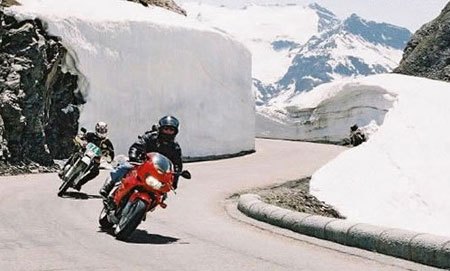





















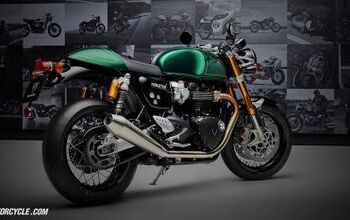



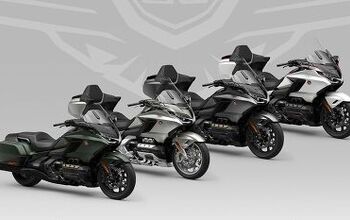






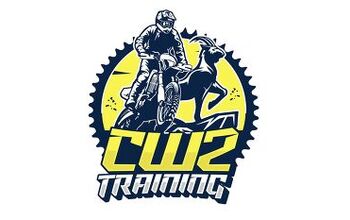

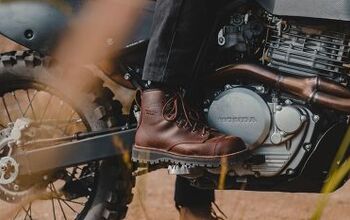

Comments
Join the conversation